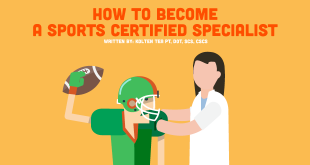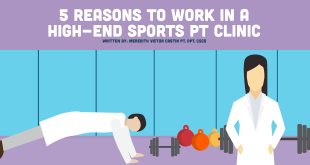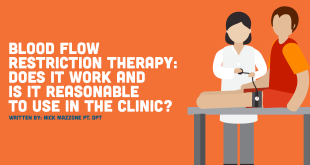Cardiopulmonary physical therapy is devoted to helping patients improve cardiovascular health and/or lung health. Cardiopulmonary PTs work in all sorts of physical therapy settings, including hospitals (inpatient), outpatient clinics (hospital based and private), and possibly even home health environments.
Cardiovascular rehabilitation (cardiac rehab)
The American Heart Association says it best: Cardiac rehab doesn’t change your past, but it can help improve your heart’s future.
Cardiovascular rehabilitation can help those who have heart disease, or those at risk, to reduce the risk of future cardiovascular episodes and improve overall health. For physical therapists, interprofessional collaboration is key for success. Cardiac rehab physical therapists work alongside family members and other professionals.
These professionals include, but are not limited to, the following:
- Doctors
- Nurses
- Registered dietitians
- Psychologists
- Pharmacists
- Social workers
As you can see, physical therapists play a small, but very important, role in the grand scheme of cardiac rehabilitation. Physical therapists must work collaboratively with other health team members to ensure optimal physical recovery.
Moreover – and often overlooked – cardiovascular rehabilitation also deals with a patient’s mental and emotional well-being after a traumatic cardiac event.
For example, per the Journal of the Association of Physicians of India, after a myocardial infarction (MI), the goal is to mobilize the patient as soon as he or she is clinically stable, often within 24-48 hours of the episode.
Post-MI, a patient is considered stable if he or she displays the following:
- No new or recurrent chest pain in the past 8 hours
- Creatine kinase and/or troponin levels are not rising
- No new signs of uncompensated heart failure and no new significant, abnormal rhythm or ECG changes in the past 8 hours
Cardiac rehab is broken into different phases:
Examples of goals and activities include:
- Supine-to-sit on the edge of the bed
- Ambulation in the room
- Ambulation for 2-5 minutes in the hospital hallways
- Rate or Perceived Exertion (RPE) should be 13 or less on the 6-20 Borg scale.
- Goal
- Keep heart rate below 120 beats per minute (or no more than 20 beats above the resting heart rate if the patient has a high resting heart rate)
- If safely able to do so, exercises and/or mobilization should be performed 2-4 times per day
Phase II primarily consists of aerobic exercises; however, some programs may also include light strengthening and stretching. Although programs and timeframes can vary by individual patient, Phase II typically begins 2-4 weeks after the cardiac event and typically lasts 3-6 weeks.
Examples of goals and activities include:
- Aerobic exercises (e.g. walking, running, swimming, cycling)
- 3-5 days per week
- 60-85% of maximal heart rate
- 20-60 minutes per session
- Unstable angina
- Resting systolic blood pressure greater than 200 mmHg
- Resting diastolic blood pressure greater than 110 mmHg
- 3rd degree atrioventricular block
- Uncompensated congestive heart failure
- Resting ST-segment depression greater than 2mm
- Active pericarditis or myocarditis
- Critical aortic stenosis
Although patients are still supervised, vitals are no longer strictly monitored. Phase III will likely further incorporate strength training and stretching. Research has shown vast benefits from strength training – both in general and after a cardiac event – and stretching allows patients to build or maintain flexibility, which will help promote and maintain a long-term active lifestyle for years to come.
Examples of goals and activities include:
- Moderate resistance exercises
- 2-3 days per week
- 3 sets of 10-15 repetitions
- 8-10 different total exercises for the upper and lower body
Pulmonary rehabilitation (Pulmonary rehab)
Pulmonary rehabilitation helps patients increase awareness of their lungs in regards to performing activity. Pulmonary rehab also helps patients improve overall pulmonary function. Pulmonary rehabilitation is beneficial for patients with a pulmonary disease, most commonly chronic obstructive pulmonary disease (COPD).
Like cardiovascular rehabilitation, pulmonary rehab is administered by a vast team of healthcare professionals. While sometimes begun in an inpatient setting, pulmonary rehab is often utilized in an outpatient program that is conducted at a clinic, hospital, or sometimes at the patient’s home.
Pulmonary rehabilitation may include:
- Nutritional counseling
- Patient education about the disease
- Breathing strategies
- Energy-conservation techniques
- Relaxation techniques
- Group support
- Psychological counseling
- Exercise training
As with cardiac rehab, pulmonary rehabilitation is broken into separate phases:
Virtually all patients enrolled in pulmonary rehab report benefits to at least some degree. Patients often report less shortness of breath and more energy.
Pros and Cons to working as a cardiac rehab PT or pulmonary rehab PT
Want to explore cardiopulmonary physical therapy in more depth?
These are just the bare basics of cardiac and pulmonary rehab. If either of these settings sound like your calling within the realm of PT, a great website to visit next is the
Cardiovascular & Pulmonary Section of the American Physical Therapy Association.
Another great way to start is by looking for physical therapy jobs where you can float into the cardiopulmonary physical therapy departments to be trained. If you can work at a large hospital system, you might be able to do some working or shadowing in both the inpatient and outpatient departments.
If you’re unable to leave your current job to take a chance on a new role, consider shadowing or volunteering on your days off. And if you’re feeling super ambitious, you could pick up a per diem home health job on your off days, or shadow a home health PT who performs cardiac rehab.
Taking these steps will enable you to get your feet wet in the field and see if you wish to pursue a specialization.
Ready to specialize as a Cardiovascular and Pulmonary Certified Specialist (CCS)?
If you’re enjoying your role as a cardiopulmonary physical therapist, that’s fantastic! You can take it further by pursuing a residency in cardiopulmonary physical therapy, or you can gain hours on the job. At the end of either path to specialization, you’d need to pass an examination to get those letters after your name.
Not sure if you are eligible to apply for specialization? Take a look at the minimum criteria for CCS. If you’ve met the minimum criteria, go on and apply to be a CCS specialist! Your job options will multiply! Plus, you can teach at local and online physical therapy schools to spread your passion for the specialty to the next generation of physical therapists!
References:
http://www.heart.org/HEARTORG/Conditions/More/CardiacRehab/What-is-Cardiac-Rehabilitation_UCM_307049_Article.jsp#.WLs7mvkrI2x
http://japi.org/december_special_issue_2011/10_cardiac_rehabilitation_after.pdf
https://www.stmaryhealthcare.org/PhasesofCardiacRehab
https://www.nhlbi.nih.gov/health/health-topics/topics/pulreh
http://www.uhhospitals.org/geauga/services/rehabilitation-services/pulmonary-rehabilitation/phases-of-pulmonary-rehabilitation
http://www.upcra.org/phasedefinitions.html
https://www.verywell.com/phase-3-cardiac-rehabilitation-2696079
http://www.abpts.org/Certification/CardiovascularPulmonary/
 NewGradPhysicalTherapy.com The Largest Online Resource For New Grad Physical Therapists
NewGradPhysicalTherapy.com The Largest Online Resource For New Grad Physical Therapists




